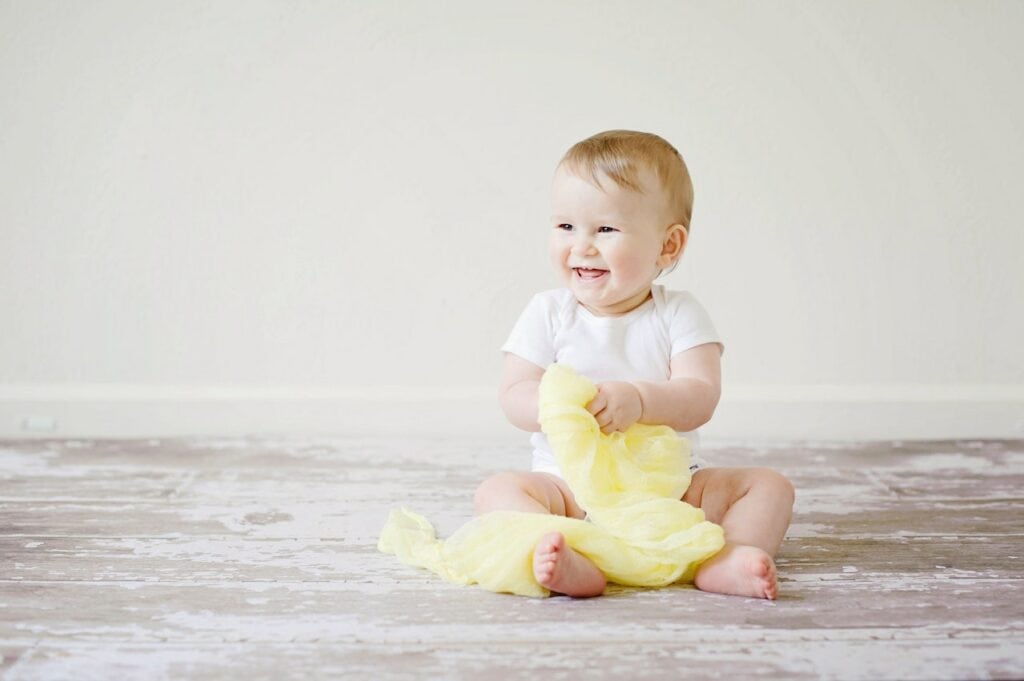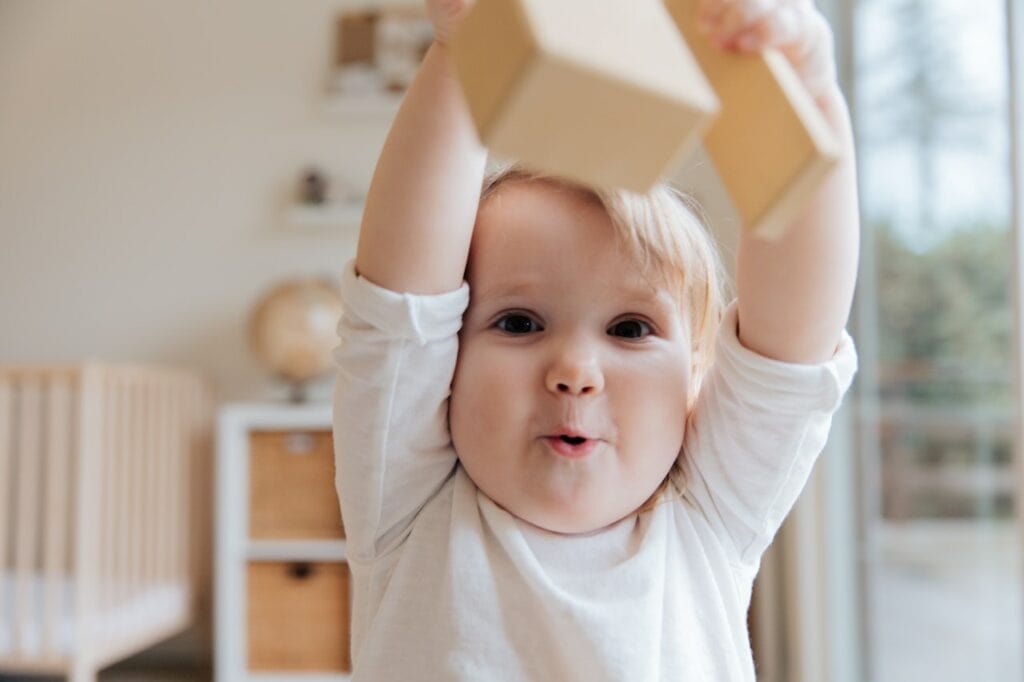Toddlers are full of energy and are always eager to explore their surroundings. One of the most exciting milestones for a toddler is learning to jump. Jumping is an essential gross motor skill that helps toddlers develop their coordination, balance, and strength. However, parents often wonder when their little ones can start jumping and how they can encourage them to do so.
Understanding the Jumping Milestone is crucial for parents who want to help their toddlers develop this skill. Jumping requires a combination of balance, coordination, and strength. Toddlers need to master these skills before they can jump safely. In this article, we will discuss the physical requirements for jumping and when toddlers can start jumping. We will also provide tips on how parents can encourage their toddlers to jump and ensure safe jumping practices.
Key Takeaways
- Jumping is a crucial gross motor skill that helps toddlers develop their coordination, balance, and strength.
- Toddlers need to master physical requirements such as balance, coordination, and strength before they can jump safely.
- Parents can encourage their toddlers to jump by providing safe jumping activities and ensuring proper supervision.
Understanding the Jumping Milestone
Jumping is a fun and exciting activity for toddlers, but when can they start jumping? Jumping is a gross motor skill that requires coordination, balance, and strength. It is considered a developmental milestone that most toddlers achieve between the ages of 2 and 3 years old.

Toddlers develop at their own pace, and some may start jumping earlier or later than others. However, typically developing children should be able to jump with both feet off the ground by the age of 3. By this age, they should also be able to jump forward, jump in place, and jump down from a low step or curb.
Jumping is an important milestone in toddler development as it helps to improve their balance, coordination, and gross motor skills. It also helps to build strong bones and muscles, which are essential for overall health and well-being.
Parents can encourage their toddlers to practice jumping by providing them with safe and appropriate opportunities to do so. Soft surfaces such as grass or carpet can help to cushion falls, and parents should always supervise their children during jumping activities.
In conclusion, jumping is a significant developmental milestone for toddlers, and most children can achieve this skill between the ages of 2 and 3 years old. Parents can support their children’s development by providing them with safe and fun opportunities to practice jumping.
Physical Requirements for Jumping
Jumping is a complex physical activity that requires a combination of strength, coordination, and balance. Toddlers need to meet certain physical requirements before they can jump safely and effectively. Some of the key physical requirements for jumping are discussed below.
Leg Strength and Muscle Development
Jumping requires strong leg muscles, especially the quadriceps, hamstrings, and calf muscles. Toddlers need to develop these muscles through regular physical activity and exercise. Activities like running, climbing, and playing on playground equipment can help strengthen leg muscles and prepare toddlers for jumping.
Coordination and Balance
Jumping also requires good coordination and balance. Toddlers need to be able to coordinate the movements of their legs and arms while maintaining their balance. This requires the development of gross motor skills, which can be improved through activities like hopping, skipping, and jumping on one foot.
Energy and Physical Fitness
Jumping can be a physically demanding activity, especially for toddlers who are still developing their stamina and endurance. Toddlers need to have enough energy and physical fitness to jump repeatedly without getting tired or losing their balance. Regular exercise and physical activity can help improve a toddler’s energy and fitness levels, making it easier for them to jump for longer periods of time.
Foot Development
Jumping also requires proper foot development. Toddlers need to have strong and flexible feet with good arch support to jump safely and effectively. Wearing supportive shoes and engaging in activities that promote foot strength and flexibility can help improve foot development and prepare toddlers for jumping.
In conclusion, jumping requires a combination of physical skills and development, including leg strength, coordination, balance, energy, physical fitness, and foot development. Toddlers can develop these skills through regular physical activity and exercise, which can prepare them for safe and effective jumping.
When Can Toddlers Start Jumping
Jumping is a fun and exciting activity for toddlers. It is a milestone that parents look forward to, as it signifies their child’s physical development. But when can toddlers start jumping?

Most toddlers can start jumping between the ages of 2 and 3 years old. However, it is important to note that jumping is a complex motor skill that requires a certain level of physical development.
Before toddlers can jump, they need to have developed their gross motor skills such as walking, running, and cruising. These skills help them build strength and coordination in their legs, which are essential for jumping.
It is also important for parents to encourage their toddlers to jump in a safe environment. Soft surfaces like carpet or a mat can help cushion their fall in case they lose their balance.
In conclusion, while most toddlers can start jumping between the ages of 2 and 3 years old, it is important to consider their physical development and safety when encouraging them to jump.
Encouraging Toddlers to Jump
Jumping is a fun activity for toddlers that can help improve their gross motor skills and coordination. However, some toddlers may be hesitant to jump or may not know how to do it properly. Here are some tips for encouraging toddlers to jump:
Provide Support
Toddlers may feel more confident jumping if they have something to hold onto for support. Parents can provide support by holding their child’s hands or placing a small trampoline or foam block on the ground for the child to jump on.
Encourage Practice
Like any skill, jumping takes practice. Parents can encourage their child to jump by making it a fun game. For example, they can play “Jumping Frog” where the child jumps from one spot to another, or “Jumping Jacks” where the child jumps while spreading their arms and legs.
Be Positive and Encouraging
Toddlers may feel discouraged if they are not able to jump as high or as far as they want to. Parents can help boost their child’s confidence by praising their efforts and progress. They can also provide positive feedback by saying things like “Great job!” or “You’re getting better every day!”
Build Courage
Some toddlers may be hesitant to jump because they are afraid of falling or getting hurt. Parents can help build their child’s courage by creating a safe and supportive environment for jumping. They can also model jumping themselves to show their child that it is safe and fun.
Overall, encouraging toddlers to jump can be a fun and rewarding experience for both parent and child. With support, practice, positivity, and courage, toddlers can learn to jump with confidence and joy.
Safe Jumping Practices
Jumping is a fun activity for toddlers, but it can also be dangerous if not done safely. Here are some safe jumping practices to keep in mind:
1. Ensure a Safe Landing Surface
It is important to ensure that the surface where the toddler is jumping is safe and free from hazards. The ground should be level and free from rocks, sticks, or other objects that could cause injury. If jumping indoors, a soft surface such as carpet or a mat is recommended to cushion any falls.
2. Supervision is Key
Toddlers should always be supervised when jumping, especially if they are jumping on a trampoline or other elevated surface. An adult should be present to ensure that the toddler is jumping safely and not doing anything that could cause injury.
3. Proper Footwear
Toddlers should wear appropriate footwear when jumping to prevent slips and falls. Shoes with good grip and support are recommended.
4. Limit Jumping Time
Jumping for extended periods of time can be tiring and increase the risk of injury. Toddlers should be limited to short jumping sessions with breaks in between.
5. Teach Safe Jumping Techniques
Teaching toddlers safe jumping techniques can help prevent injury. They should be taught to jump with both feet together, land with their knees slightly bent, and to avoid jumping too high.
In conclusion, following these safe jumping practices can help ensure that toddlers can enjoy jumping without the risk of injury.
Jumping Activities for Toddlers
Jumping is an essential skill that toddlers need to learn. It helps with their physical development and coordination. Here are some jumping activities for toddlers that can be done at home or in a playground.

Hopping and Frog Jumps
Hopping and frog jumps are simple jumping activities that toddlers can do. They can hop on one foot or both feet and pretend to be a frog. This activity helps with balance and coordination.
Trampoline
A trampoline is a fun way for toddlers to jump. It provides a safe and controlled environment for them to practice their jumping skills. Toddlers can jump and bounce on the trampoline while holding onto the safety bar.
Jumping Toys
Jumping toys such as pogo sticks and bouncing balls are great for toddlers. They can jump and bounce around while holding onto the handlebars. These toys help with balance and coordination.
Rope and Hurdle Jumps
Rope and hurdle jumps are great jumping activities for toddlers. They can jump over a rope or hurdle, which helps with their coordination and balance.
Hopscotch and Animal Jumps
Hopscotch and animal jumps are fun jumping activities for toddlers. They can jump on different shapes and letters while playing hopscotch. Animal jumps involve jumping like different animals such as a kangaroo or a frog.
Jump Rope
Jump rope is a great jumping activity for toddlers. They can jump over the rope while holding onto the handles. This activity helps with coordination and balance.
Soccer and Kicking
Soccer and kicking are great jumping activities for toddlers. They can jump and kick the ball while playing soccer. This activity helps with coordination and balance.
Puddles and Bubbles
Jumping in puddles and bubbles is a fun activity for toddlers. They can jump and splash around in puddles or pop bubbles. This activity helps with coordination and balance.
In conclusion, jumping activities for toddlers are essential for their physical development and coordination. These activities can be done at home or in a playground and are fun and engaging for toddlers.
Overcoming Jumping Challenges
Jumping is a fun and exciting activity for toddlers, but it can also present some challenges. Toddlers may struggle with jumping due to a variety of factors, including anxiety, physical hurdles, and delayed development. However, with the right approach, parents and caregivers can help toddlers overcome these challenges and enjoy the benefits of jumping.

Addressing Physical Hurdles
Some toddlers may struggle with jumping due to physical hurdles, such as weak muscles or balance issues. In these cases, it’s important to work with a pediatrician or physical therapist to develop a plan to address these challenges. This may include exercises to strengthen muscles, balance training, or other interventions to help the child build confidence and coordination.
Managing Anxiety
Jumping can be a scary experience for some toddlers, especially if they have had a negative experience in the past. To help manage anxiety, parents and caregivers can create a safe and supportive environment for jumping. This may include using soft mats or cushions, practicing jumping in a familiar and comfortable space, or providing verbal encouragement and reassurance.
Overcoming Obstacles
Toddlers may encounter obstacles when trying to jump, such as stairs or other objects in their path. In these cases, it’s important to help the child develop problem-solving skills and learn how to navigate these challenges safely. Parents and caregivers can also provide guidance and support to help the child feel more confident and comfortable when jumping over obstacles.
Addressing Delayed Development
Some toddlers may experience delayed development, which can impact their ability to jump. In these cases, it’s important to work with a pediatrician or early intervention specialist to identify any underlying issues and develop a plan to address them. This may include physical therapy, speech therapy, or other interventions to support the child’s overall development.
In summary, jumping can be a fun and beneficial activity for toddlers, but it can also present some challenges. By addressing physical hurdles, managing anxiety, overcoming obstacles, and addressing delayed development, parents and caregivers can help toddlers overcome these challenges and enjoy the benefits of jumping.
How Jumping Contributes to Motor Planning
Jumping is an essential gross motor skill that toddlers develop as they grow. It involves propelling oneself off the ground using both feet and landing safely on the ground. Jumping is not only fun for toddlers, but it also contributes to their overall development.
Motor planning is the ability to plan and execute a sequence of movements. Jumping is an excellent way to promote motor planning skills in toddlers. When a toddler jumps, they have to coordinate their movements to propel themselves off the ground and land safely. This requires them to plan and execute their movements in a specific sequence.
Dynamic balance is the ability to maintain balance while moving. Jumping requires toddlers to maintain their dynamic balance while propelling themselves off the ground and landing. This helps to improve their balance and coordination skills.
Proprioceptive input is the sensory information that comes from the muscles and joints. Jumping provides proprioceptive input to the muscles and joints, which helps to improve body awareness. This, in turn, helps to improve motor planning skills.
In conclusion, jumping is an excellent way to promote motor planning skills in toddlers. It helps to improve their dynamic balance, coordination, and body awareness. Therefore, parents should encourage their toddlers to jump and provide them with a safe environment to do so.
Professional Guidance for Toddler’s Jumping
When it comes to toddlers and jumping, it is important to seek professional guidance. A pediatrician or a licensed therapist can provide valuable insight into the development of a child’s motor skills and determine when it is safe for them to start jumping.

According to pediatric experts, toddlers can begin jumping as early as 18 months old. However, it is important to keep in mind that every child develops at their own pace, and some may not be ready to jump until they are closer to 2 years old.
It is also important to ensure that toddlers have proper supervision and a safe environment when jumping. Using a therapy ball or soft surface can help prevent injuries and provide a fun and engaging way for toddlers to develop their motor skills.
In addition to providing a safe environment, parents and caregivers can encourage jumping by making it a fun activity. Incorporating songs or games can make jumping a fun and interactive way for toddlers to develop their coordination and balance.
Overall, seeking professional guidance and ensuring a safe environment can help toddlers develop their jumping skills in a healthy and fun way.
Fitness and Jumping
Toddlers are naturally active and love to explore their surroundings. Jumping is one of the activities that toddlers enjoy, and it can be a great way to improve their fitness. However, parents may wonder when it is safe for their toddlers to start jumping.
Jumping is a form of exercise that can help toddlers develop their muscles, improve their balance, and enhance their coordination. It can also help them burn off excess energy and improve their mood. However, parents should be aware that jumping can also be risky if not done properly.
Before toddlers start jumping, they should be able to stand and walk steadily. They should also have good muscle control and coordination. Parents should supervise their toddlers while they jump to ensure that they do not fall or injure themselves.
It is important to choose the right surface for toddlers to jump on. A soft surface, such as a carpet or a mat, can help cushion their falls and reduce the risk of injury. Hard surfaces, such as concrete or tile, should be avoided.
Toddlers can start jumping as early as 18 months, but parents should not force them to do so. It is important to let toddlers jump at their own pace and to avoid pushing them beyond their limits. Jumping should be a fun activity that toddlers enjoy, not a chore that they have to do.
In conclusion, jumping can be a great way for toddlers to improve their fitness and have fun. However, parents should ensure that their toddlers are ready to jump and that they do so safely. By following these guidelines, parents can help their toddlers develop their muscles, coordination, and balance while reducing the risk of injury.
Related post: Toddler Looking Between Legs
Frequently Asked Questions
At what age do toddlers typically start jumping?
Toddlers typically start jumping between 2 and 3 years old. However, every child is different and may start jumping earlier or later.
How can I help my toddler learn to jump?
There are several ways to help your toddler learn to jump. You can encourage them to jump by jumping with them, playing games that involve jumping, and providing a safe space for them to practice.
What are some signs that my toddler is ready to start jumping?
Some signs that your toddler is ready to start jumping include being able to stand on their own, walking confidently, and showing an interest in jumping.
Is it safe for toddlers to jump on trampolines?
It is not recommended for toddlers to jump on trampolines due to the risk of injury. Trampolines should only be used with adult supervision and proper safety precautions.
What are some alternative activities to jumping for toddlers?
There are many alternative activities to jumping for toddlers that can help with gross motor development, such as crawling, climbing, and running.
When should I be concerned if my toddler is not jumping yet?
If your toddler is not jumping by the age of 3, it may be a good idea to speak with their pediatrician. However, it is important to remember that every child develops at their own pace, and some may take longer to learn certain skills.

Iesha is a loving mother of 2 beautiful children. She’s an active parent who enjoys indoor and outdoor adventures with her family. Her mission is to share practical and realistic parenting advice to help the parenting community becoming stronger.
